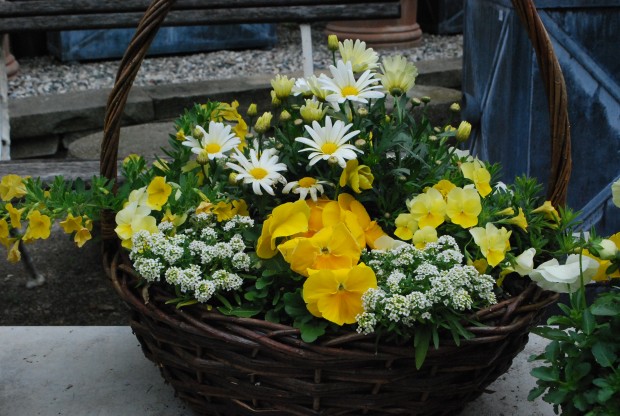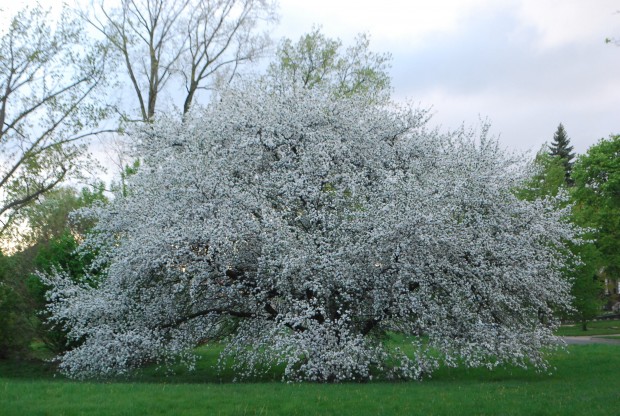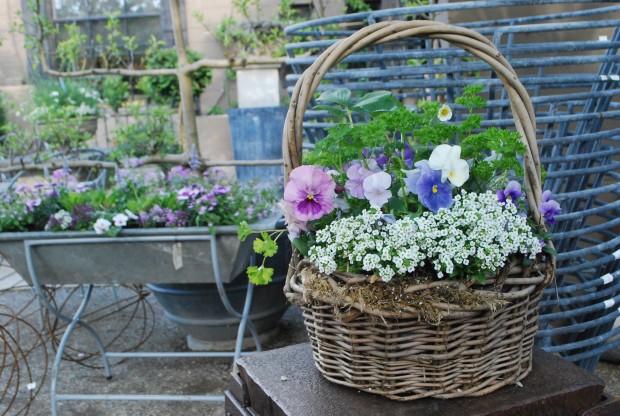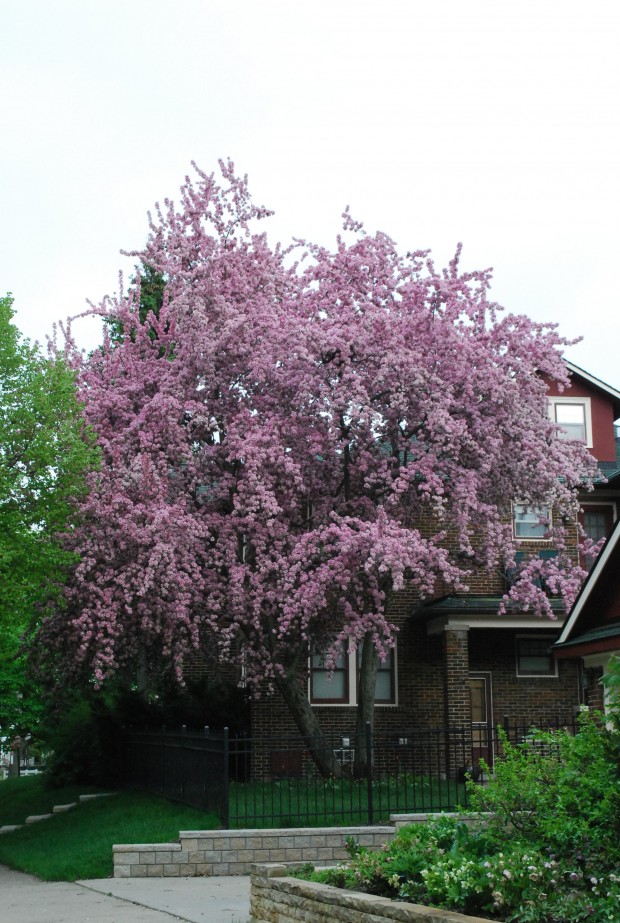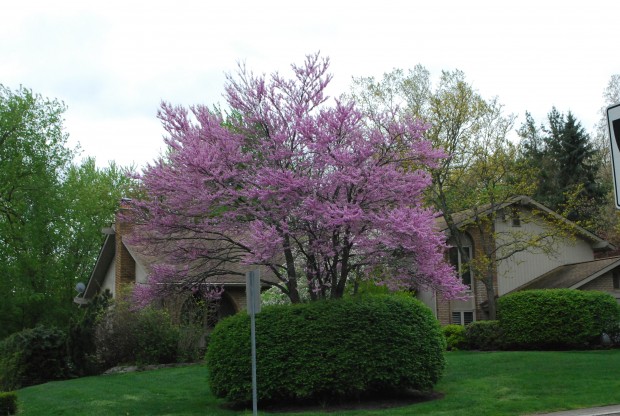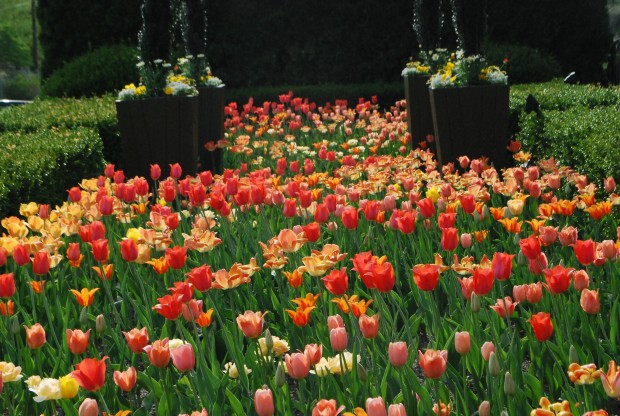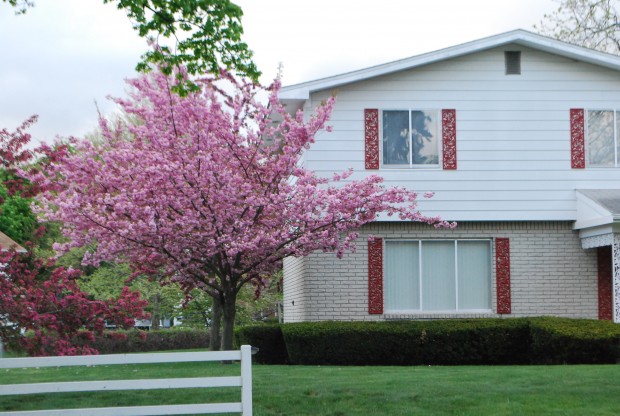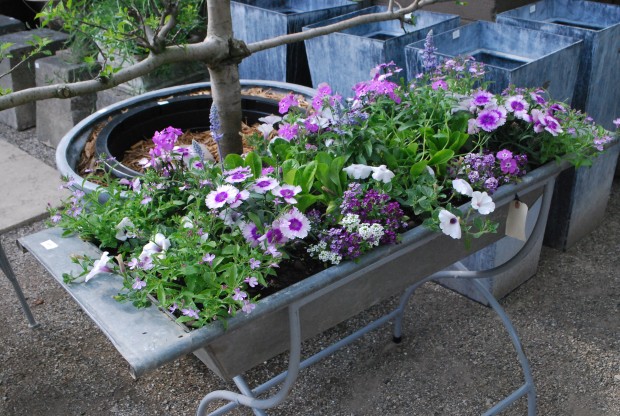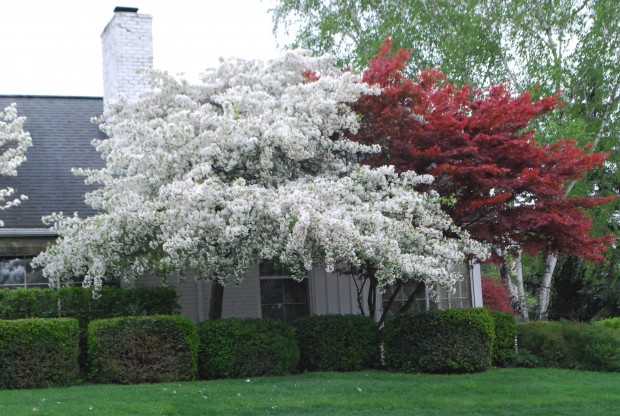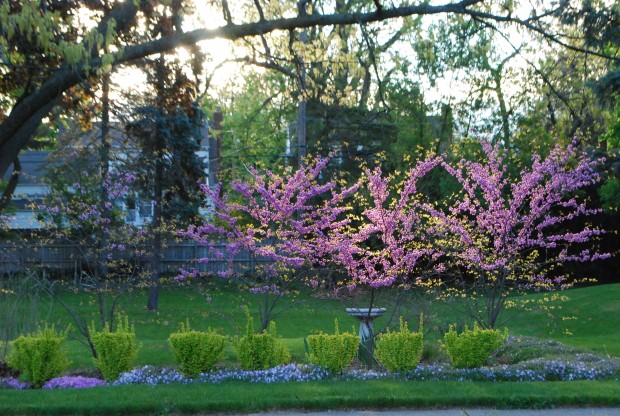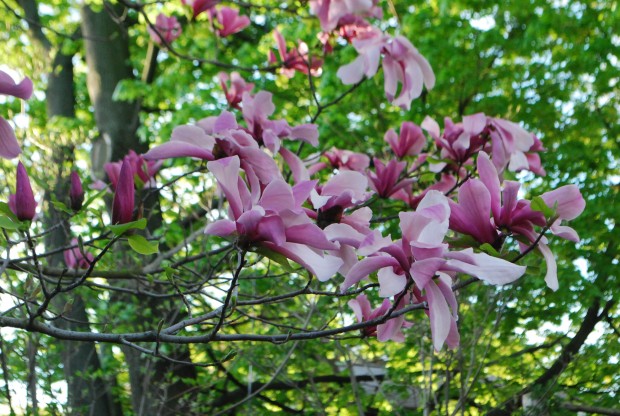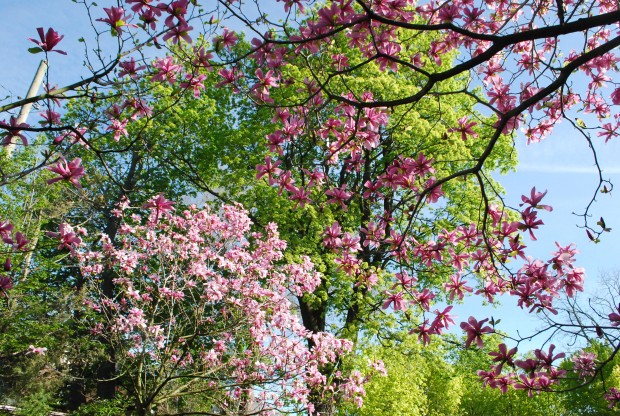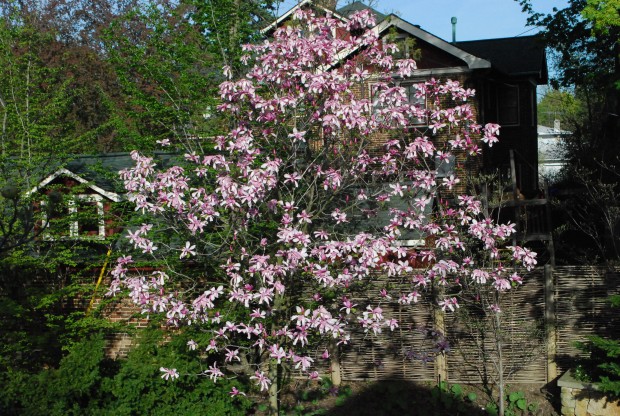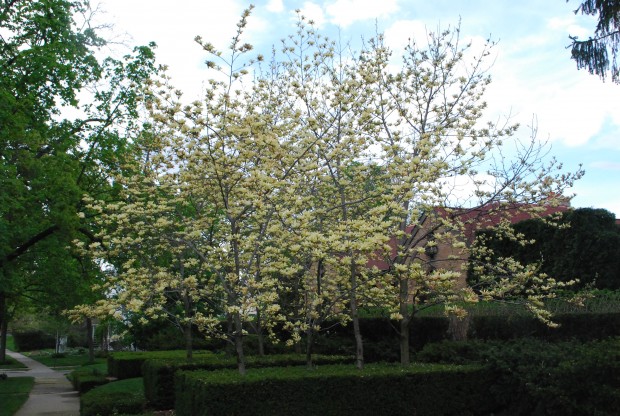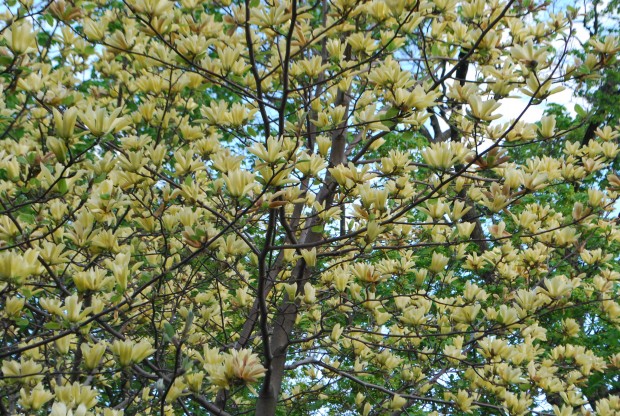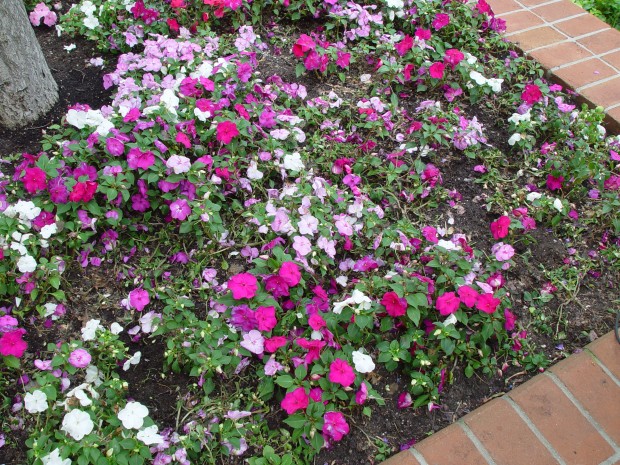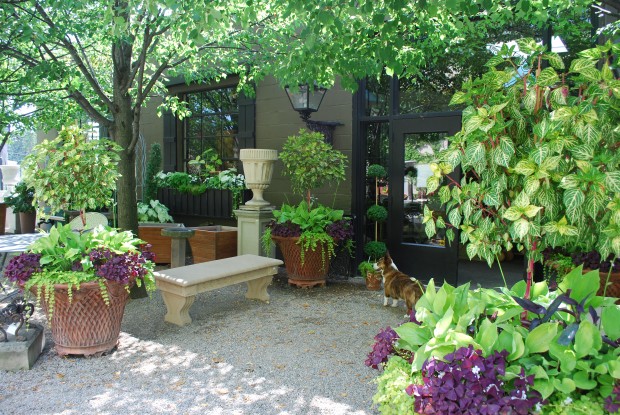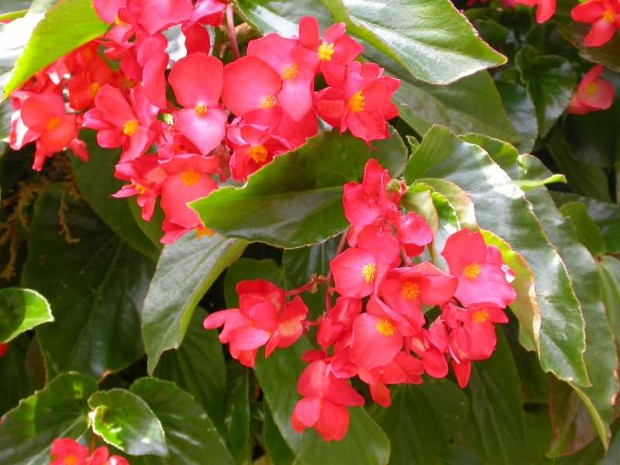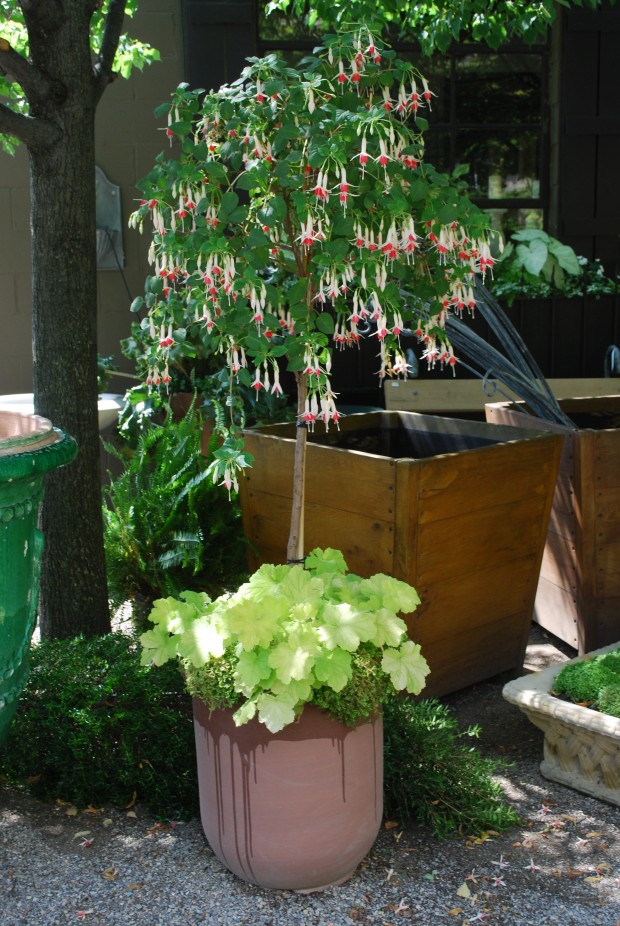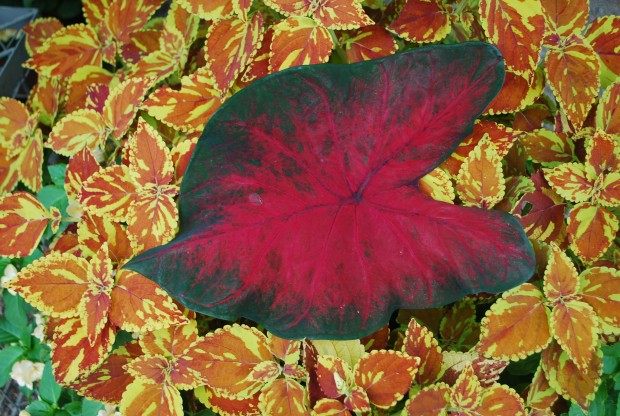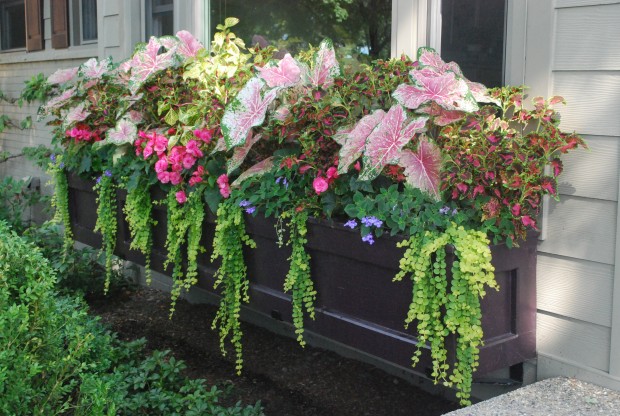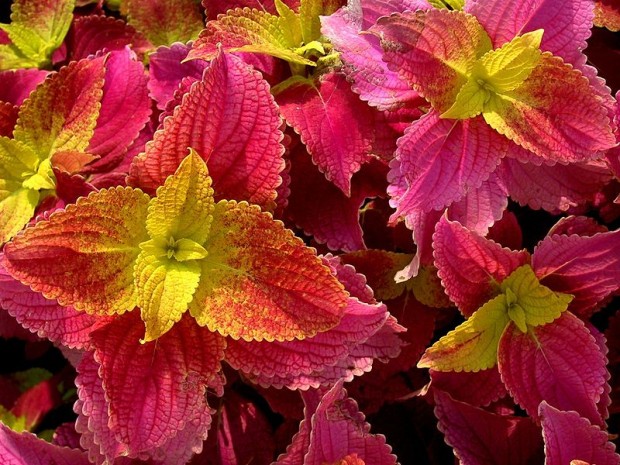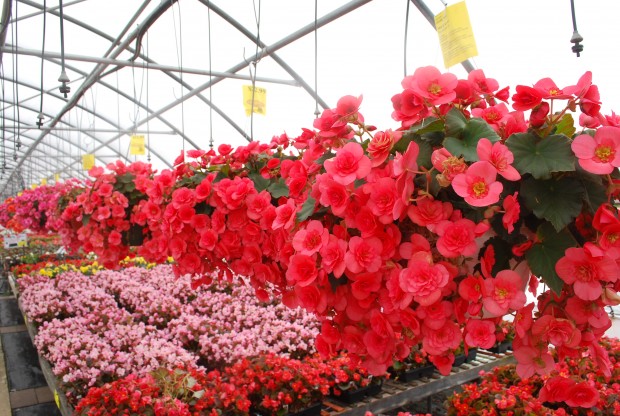Our weather forecast called for 27 to 33 degrees overnight Sunday. The prediction for 33 degrees is for downtown Detroit-my yard is 30 miles due north. I must have stared at the Accuweather frost zone map for at least 15 minutes. It appears that my yard is in the center of a frost warning zone spanning 11 states. The chances of a hard freeze overnight look incredibly good. I shouldn’t be surprised. May in Michigan is spring-not summer.
If you are an experienced gardener in the midwest, you know that frost is possible until the end of May. The most reliable table for determining frost dates comes from NOAA-our national weather service. You can check their frost tables for many cities in all the 50 states here: National Climatic Data Center Their date shows that Detroit Has a 90% chance of a frost on or prior to April 21. A 50% chance of a frost on or prior to May 10. And a 10% chance of frost on or prior to May 28. The fact that I live 30 miles north of Detroit, in a much less densely built area than Detroit, tells me those frost figures may be a little optimistic. Growers that I know with farming roots tell me that they do not rule out the chance of frost until the date of the May full moon-which is May 25 this year.
At 6 am this morning, it was 30 degrees-this constitutes a freeze. Cold tolerant spring flowers, such as pansies, violas, ornamental cabbage, spikes, annual phlox, osteospermum, spinach, chives, peas, and alyssum are not bothered by this. The blossoms on fruit trees and ornamental flowering trees, new soft perennial growth and the like can be damaged, but not killed by this. Very cold sensitive annual and vegetable plants can be severely damaged, disfigured, or killed by a 30 degree night. I did mist my pear tree, which is in flower, and my delphiniums which have shot up in the last 2 weeks. I felt everything else could handle the chill.
What I do not have in my yard, or at my shop are very cold sensitive plants. Basil, coleus, lantana, begonias, New Guinea impatiens, bananas, mandevillea, bean vines, caladiums-tropical plants cannot taking freezing weather. Ditto for tomatoes and beans, and a slew of other vegetables and herbs. Yesterday we had several mini-hail and snow showers. Even assuming that the late spring temperatures are sufficiently high that plants won’t die, there can be lingering effects from planting too early.
The air temperature is not nearly so significant as the soil temperature. If you put your finger in the soil, and that soil is cold, you can be sure that a tropical plant that is native to Florida or South America is not going to be happy being planted. I believe that cold soil can stunt plants such that they take weeks to recover. Or they never really recover and prosper at all. I see this too early planting most often in commercial locations-flat after flat of fibrous begonias planted in early May that look like they are shivering. These plants actually seem to get smaller, the leaf color paler. They will at best languish until the soil warms up. At worst, they don’t really grow much, and give up growing early. However I have seen houses with pots full of summer flowering annuals on the front porch recently.
I understand that irrepressible optimism that fuels every gardener. But in this case, planting early in hopes of getting a jump on the summer season can actually put those plants behind. I do not usually plant my pots at home until the first week of June-sometimes later. I may plant earlier, but I have to be convinced that the night temperatures are consistently going to stay above 50. The forecast tonight-39 degrees. Better that the tropical plants have the benefit of a warm and sunny greenhouse for a while longer. Our very cold spring means that many of the summer plants are really small still. An annual plant that has not put on much growth yet is even more likely to suffer from cold weather.
There are benefits to waiting to plant for summer until the soil has warmed. You can focus on enjoying the tulips, pansies, and the lily of the valley. The flowering crabs and the apple trees blooming. The redbuds, the hellebores, the moss phlox and the wildflowers. Give the spring season its due. If your yard does not have much in the way of spring bloom, you could consider adding some things-no need to starve yourself. The need to see something flowering after a long winter is a real need. There are ways to satisfy that need in a successful way. I plant a lot of summer containers and annual gardens every year. Those that get planted when the time is right take off quickly, and grow well.
